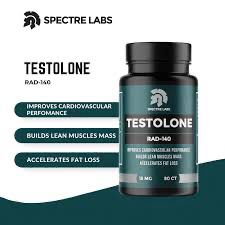RAD-140 (TESTOLONE 15 mg total) | 90 capsules per bottle
RAD-140 (TESTOLONE 15 mg total) | 90 capsules per bottle
Product Description
RAD-140 (TESTOLONE 1350 mg total)
RAD 140, also known as Testolone, is a selective androgen receptor modulator (SARM) being researched for possible application in the treatment of muscle wasting and osteoporosis. The FDA has not cleared it for human consumption or usage, and its long-term consequences on human health are unknown.
How does it work?
RAD 140, like other selective androgen receptor modulators (SARMs), operates in the body by preferentially targeting and binding to androgen receptors. Androgen receptors may be found all over the body, including muscle tissue, bone tissue, and reproductive organs. When RAD 140 interacts with these receptors, it causes a chain of chemical processes that can lead to greater muscle development, bone density, and athletic performance.
In contrast to anabolic steroids, which can induce a variety of unpleasant side effects due to their non-selective binding to androgen receptors throughout the body, SARMs such as RAD 140 are meant to be more selective in their targeting of certain androgen receptors. This selectivity is expected to lower the probability of unfavorable side effects while still offering many of the anabolic steroid advantages.
RAD-140 Dosage
In clinical trials, RAD 140 was given to people at dosages ranging from 0.1 to 30 mg per day. Nevertheless, these studies have mostly focused on short-term results and have been done on small samples of healthy adults.
Benefits
The potential therapeutic advantages of RAD 140, like other selective androgen receptor modulators (SARMs), are being investigated. While the long-term consequences on human health are unknown, some of the possible advantages reported in animal and human research include:
- Increased muscle mass and strength: RAD 140 has been found in both human and animal studies to improve muscle mass and strength.
- Increased bone density: RAD 140 may assist to increase bone density, which may be advantageous for those who have osteoporosis.
- Reduced androgenic side effects: RAD 140 has a decreased likelihood of developing unfavourable androgenic side effects such acne, hair loss, and prostate enlargement than typical anabolic steroids.
Side Effects Of RAD-140
While RAD 140 may have some potential advantages, its long-term effects on human health are unknown, and the FDA has not cleared its usage for human ingestion or use. Like with any supplement or medication, there is the possibility of negative effects with RAD 140, which include:
- Hormone imbalances: RAD 140 has the potential to disturb the body’s normal hormonal balance, resulting in severe side effects such as diminished fertility and libido, gynecomastia (male breast tissue development), and mood disorders.
- RAD 140 may cause liver damage, especially at large dosages or with long-term usage.
- Cardiovascular issues: RAD 140 may raise the risk of cardiovascular issues such as heart attack or stroke.


